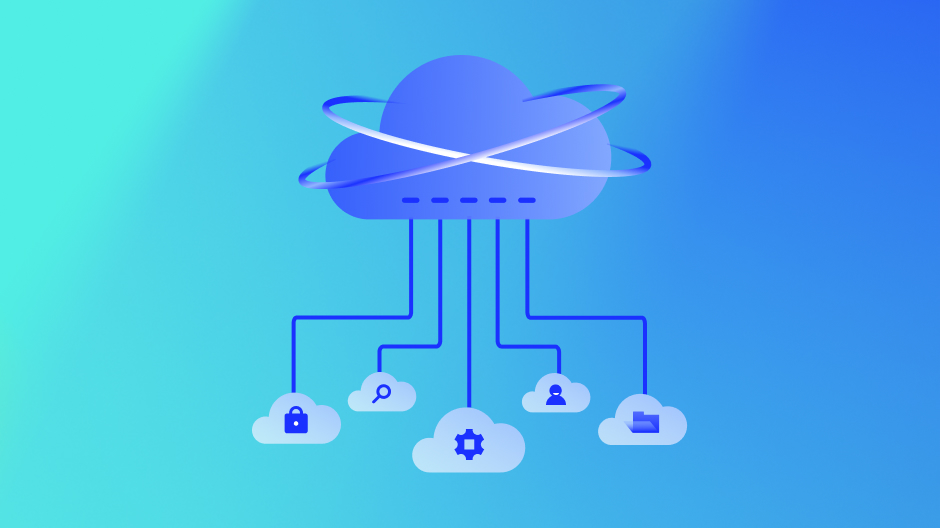Network topology defines the arrangement of devices and connections within a network, directly influencing data flow, performance, and security. Selecting the right topology is critical for ensuring efficient data transfer, scalability, and robust security, all of which are essential for maintaining a reliable IT infrastructure.
When designing your network architecture, it’s important to consider different topology options, each with its own advantages and drawbacks, depending on your specific business needs. A well-planned network can significantly enhance connectivity and strengthen security.
Key takeaways




What is Network Topology?
Network topology refers to the arrangement of various network components, such as devices, nodes, and connections. It dictates the rules of how these components are positioned in relation to each other. There are two main categories of network topology: physical and logical.
Physical network topology deals with the physical elements of your network, such as cables, and connectors. On the other hand, logical network topology provides a virtual representation of how your network is arranged and how the components connect with each other.
There are various network topologies to choose from:
Star Network
In a star network, each node is connected to a central hub using a cable. This hub acts as a server to manage the network. Star networks are popular because they are easy to manage and maintain. Each node has its own cable, simplifying the configuration.
Mesh Network
A mesh network is a type of network topology characterized by its durability and flexibility, as each node is interconnected, allowing for data rerouting and self-healing capabilities when nodes go down or new ones are added. This decentralized structure enhances network resilience, ensuring uninterrupted data transmission even in the face of individual component failures.
Bus Network
A bus network places network devices on a single cable that runs from one end of the network to the other. Data travels in one direction along this cable. Bus networks are simple and cost-effective for small networks, although additional cables are required to add more nodes.
Ring Network
In a ring network, nodes are connected in a circular data path. Data travels between these nodes. Most ring networks use a technique called token passing to control the flow of data from one node to the next. Ring topologies are commonly found in smaller networks like those used in schools.
Tree Network
A tree network resembles the branches, leaves, and trunk of a tree. There is only one route between nodes in this configuration. Tree topologies are highly scalable, making them suitable for wide-area networks (WANs) and networks in hospitals or colleges.
Hybrid Topology
If none of the above topologies meets your business needs, a hybrid topology might be the solution. By combining two or more topologies, each with its own set of nodes, you can optimize your network for scalability, security, and other requirements.
Why is Choosing the Right Topology Important?
There are several factors to consider when choosing a network topology:
Performance
To ensure network reliability and minimize downtime, you’ll want a topology that can handle failures. A mesh configuration, for example, provides high interconnectivity between nodes, resulting in better performance and fault tolerance.
Cost
Some topologies are more expensive to set up and maintain than others. Consider your budget and choose a cost-effective solution that meets your needs. For instance, a ring topology is cheaper than a tree topology because it requires less cabling.
“Investing in the right network topology today can prevent costly issues and ensure long-term success.”
Scalability
If your network is expected to grow in the future, scalability becomes crucial. Ensure that the chosen topology can accommodate additional devices without compromising network resources. While a tree topology can be costly, it offers excellent scalability and ease of expansion.
How Does Topology Influence Data Transfers?
The hardware and components you choose for your network can affect data transfer speeds. Fiber-optic cables, for example, enable faster data transfers compared to other types of cables. Hubs, switches, and routers also play a role in data transfer speeds. For example, hubs that provide fast throughput for large amounts of data are more effective for transfers than conventional switches.
The choice of hardware depends on the type of network topology you implement. Coaxial cables are often used in bus topologies due to their ease of installation, while fiber-optic cables offer higher data transfer speeds at a higher cost.
Network Reliability
Reliability is a crucial consideration when selecting a network topology. Mesh configurations, for example, reduce the risk of network failures by providing multiple paths for data transmission. Even if a connection goes down, data can still flow through alternative paths. This makes mesh topology popular for wireless networks.
On the other hand, bus topologies can be unreliable in certain conditions. High interference or noise can cause a single network failure, resulting in downtime for your business operations. Redundancy is another important consideration. Ring topologies offer path redundancy, ensuring traffic can flow even during a network failure. Mesh topologies provide full network redundancy.
Network Scalability
Adding or removing nodes from your network should be a seamless process. The chosen network topology can greatly impact the ease of future expansion. Mesh topologies allow for easy scalability as adding or removing nodes doesn’t affect the rest of the network. Bus topologies, on the other hand, have limited scalability, requiring network expertise to add devices. Ring topologies sit between mesh and bus configurations in terms of scalability.
Security
Security is a significant concern when selecting a network topology. While all networks are susceptible to cyberattacks, some topologies offer better security measures. Mesh topologies, for example, have multiple paths for data transmission, making it difficult for hackers to intercept the data flow. Protocols like encryption further enhance security in mesh topologies. Ring topologies are also difficult to infiltrate, making them suitable for preventing data theft.
On the other hand, bus and star topologies are generally less secure. Bus topologies have slower data transfer rates, giving hackers more time to access and steal data. Security should be a priority when considering your network topology.
Cost
The setup and maintenance costs associated with different network topologies vary. Consider your budget when choosing the right configuration. Star topologies can be more expensive due to the need for multiple hubs and switches. Bus topologies, on the other hand, are cost-effective with their simple design and the ability to connect devices using a single cable. Maintaining bus topologies is also affordable as additional nodes can be connected through additional cables.
When deciding on a configuration, you may need to balance cost-effectiveness with other factors like performance and scalability. For example, setting up and maintaining a mesh topology often requires expertise, but its reliability and scalability make it worth the investment. Weigh the pros and cons of each topology and choose the one that best suits your business needs.
Network Topology Case Studies
There are a few examples online that demonstrate how organizations use and optimize network topologies. Here are two case studies:
Ebiz.com
EBiz.com, a former multi-level marketing company, utilized both a star topology and bus topology for their networked computers and servers. The star topology improved network availability and performance, while the bus topology facilitated data sharing and access control in their multi-floor office building.
Unnamed Engineering Company
An engineering company used a star topology to optimize network traffic flow and reduce communication delays in an oil and gas SCADA system. This resulted in improved reliability and performance of the system.
Choosing the Right Topology for Your Organization
Now that you’re familiar with different network topologies, here are some tips to help you choose the right one for your organization:
Assess Your Business Needs
Your choice of topology should align with your specific use case. If network security is a top priority, consider mesh topology with its enhanced security protocols. On a tight budget? A bus topology might be suitable due to its simplicity and lower cost. Discuss your needs with your team and evaluate available topology options.
Weigh the Pros and Cons
No topology is perfect for every use case. Consider the advantages and disadvantages of each configuration based on your company’s size, goals, and budget. If none of the options suit your needs, consider a hybrid topology that combines different setups.
Future Considerations
Anticipate the future growth of your business and select a topology that enables scalability. A tree topology, for example, is a good choice if you plan to expand your business and expect increased network traffic in the future.
The Final Word on Network Topology
Choosing the right network topology is crucial for achieving optimal performance and scalability. While cost is a factor, investing in a more expensive setup might be worth it for long-term benefits. Evaluate different network designs, considering your budget and business needs, and follow the tips provided to make an informed decision.
Remember, a network is just one part of your IT infrastructure. LogicMonitor offers a cloud-based monitoring solution that helps you proactively improve and prevent IT-related issues. Deploying LogicMonitor takes minutes, so try it for free today.
Further reading
Networking and Kubernetes: A Layered Approach
Explore the latest networking trends, delve into the intricacies of Linux networking, and come to understand the challenges of deploying containerized applications in cloud networks.
Subscribe to our blog
Get articles like this delivered straight to your inbox








